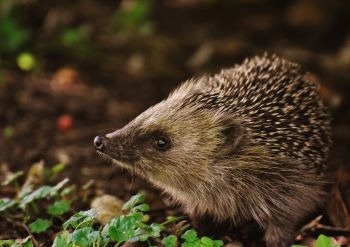An investigation performed by scientists on the exposure of small mammals to plastics in England and Wales has discovered traces in the feces of over half of the species that were subjected to analysis.

Image Credit: University of Sussex.
In a study reported in the Science of the Total Environment journal, scientists from the University of Sussex, along with the Mammal Society and the University of Exeter, have reported that the densities of plastic emitted were equivalent to those that have been reported in human studies.
Much is known about the impact of plastic on aquatic ecosystems, but very little is known about the same with terrestrial systems.
Fiona Mathews, Professor, Environmental Biology, University of Sussex
Mathews added, “By analyzing the droppings of some of our most widespread small mammals, we’ve been able to provide a glimpse of the potential impact plastic is having on our wildlife—and the most commonly found plastics leaking into our environment.”
The study, authored by graduate Emily Thrift, Prof. Fiona Mathews, and Dr. Frazer Coomber of the University of Sussex and the Mammal Society, with Dr. Adam Porter and Prof. Tamara Galloway of the University of Exeter, determines plastic polymers in four out of the seven species for which they had collected the fecal samples. Field vole, the European hedgehog, brown rat, and wood mouse were all discovered to be plastic positive.
Researchers discovered that plastic ingestion was occurring across locations and across different dietary habits, from herbivores, insectivores, and omnivores. They had anticipated finding higher plastic concentrations in samples from urban locations and less plastic in herbivorous species.
It’s very worrying that the traces of plastic were so widely distributed across locations and species of different dietary habits. This suggests that plastics could be seeping into all areas of our environment in different ways.
Emily Thrift, MSci Graduate, University of Sussex
Emily Thrift adds, “We’re also concerned that the European hedgehog, and field vole are both species suffering declines in numbers in the UK.”
By making use of the equipment at the Greenpeace laboratories at the University of Exeter, the team examined around 261 fecal samples, along with 16.5% that consists of plastic. The most general types determined were polyester, polynorbornene (used primarily in the rubber industry), and polyethylene (extensively used in single-use packaging).
All the plastic-positive species, with the exception of the wood mouse, contained polyester, which made up 27% of the fragments that were found. The paper explains that microfibers, which are widely used in the textile and fashion industries, can enter the wastewater system through household washing and then end up on the land through the use of sewage sludge as fertilizer.
Furthermore, over a quarter of the plastics discovered in the study were either “biodegradable” or bioplastics. The authors caution that while these kinds of plastics might degrade faster compared to polymers, it is possible for them to be still ingested by small mammals and additional research is required to analyze their true biological effects.
The researchers believe that the microplastics discovered in the study probably have penetrated species’ guts due to the consumption of contaminated prey or via direct ingestion. With ingestion, scientists believe species could be mistaking plastics for food or chewing macroplastics that have been utilized as nesting material or to escape entanglement.
The potential impact of plastics via the food chain is one more problem the authors are worried about and prefer additional study.
We really need to get a deeper understanding of the implications of plastic ingestion on land mammals—and the potential impacts this has on their conservation status. In our study, droppings from European hedgehogs carried the highest quantity of plastic polymers.
Fiona Mathews, Professor, Environmental Biology, University of Sussex
Prof. Fiona Mathews continued, “As a species, they are already in decline in the UK for reasons that are largely unknown, and they are classified as Vulnerable to Extinction on the IUCN-compliant regional Red List. European hedgehogs consume earthworms and previous studies have found these to contain microplastics.”
“So we really need further research to establish the scale and route of exposure more precisely, and to assess prevalence in predatory species that consume small mammals, so that we can take adequate steps to try to protect our declining wildlife from plastics,” added Mathews.
Andy Bool, CEO of the Mammal Society adds, “The Mammal Society is proud to have helped and part-funded this research as it represents an important step into the study of the impact of plastics on terrestrial mammals. With a number of small mammal species experiencing worrying declines in numbers it highlights one of the challenges they face.”
Andy Bool remarks, “We can all make a difference to help protect them from this threat by reducing the amount of single use plastic we use and reusing and recycling what we do use properly.”
Dr. Adam Porter, NERC Post-Doctoral Research Fellow at the University of Exeter states, “In the UK, plastic pollution can often seem like a problem somewhere else when most images are of polluted shorelines of tropical landscapes, or charismatic organisms like turtles or sea lions.”
Dr. Adam Porter added, “This study brings the focus home, into our lands and in some of our much beloved mammal species. Further it demonstrates that the amount of plastic waste we produce is having an impact.”
“We must change our relationship with plastic all together; moving away from disposable items and moving towards replacing plastic for better alternatives and establishing truly circular economies,” concluded Dr. Adam Porter.
Journal Reference:
Thrift, E., et al. (2022) Ingestion of plastics by terrestrial small mammals. Science of The Total Environment. doi.org/10.1016/j.scitotenv.2022.156679